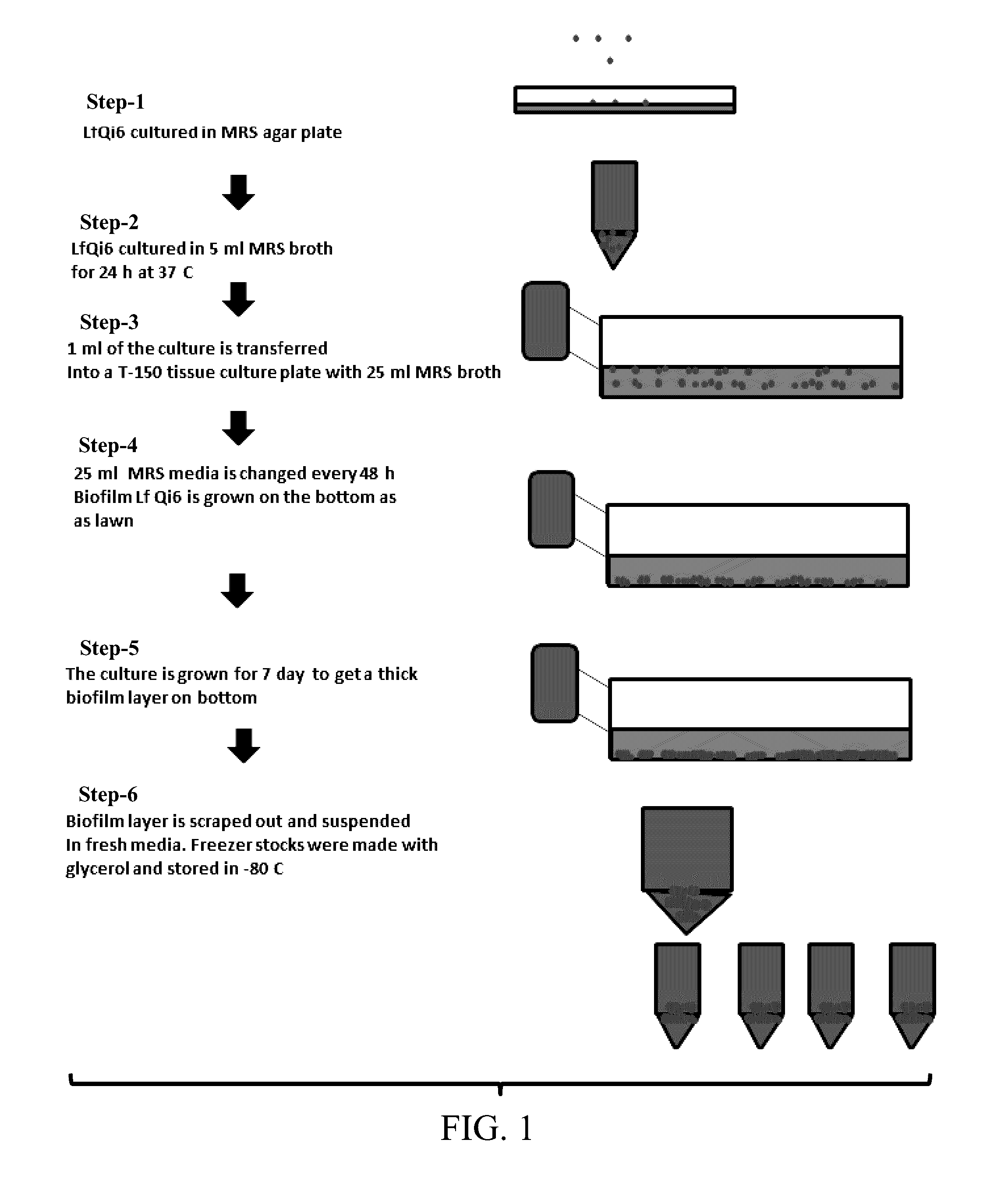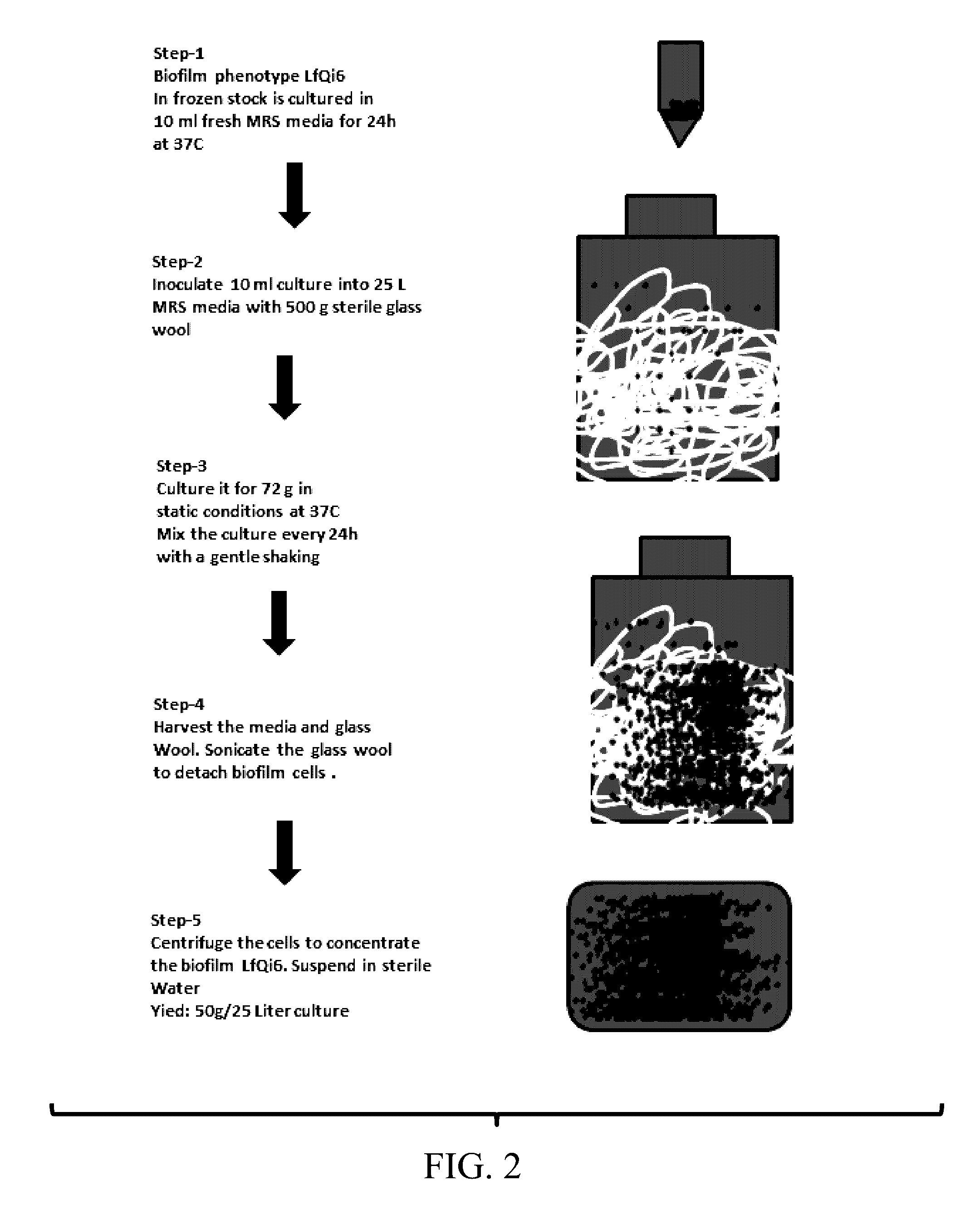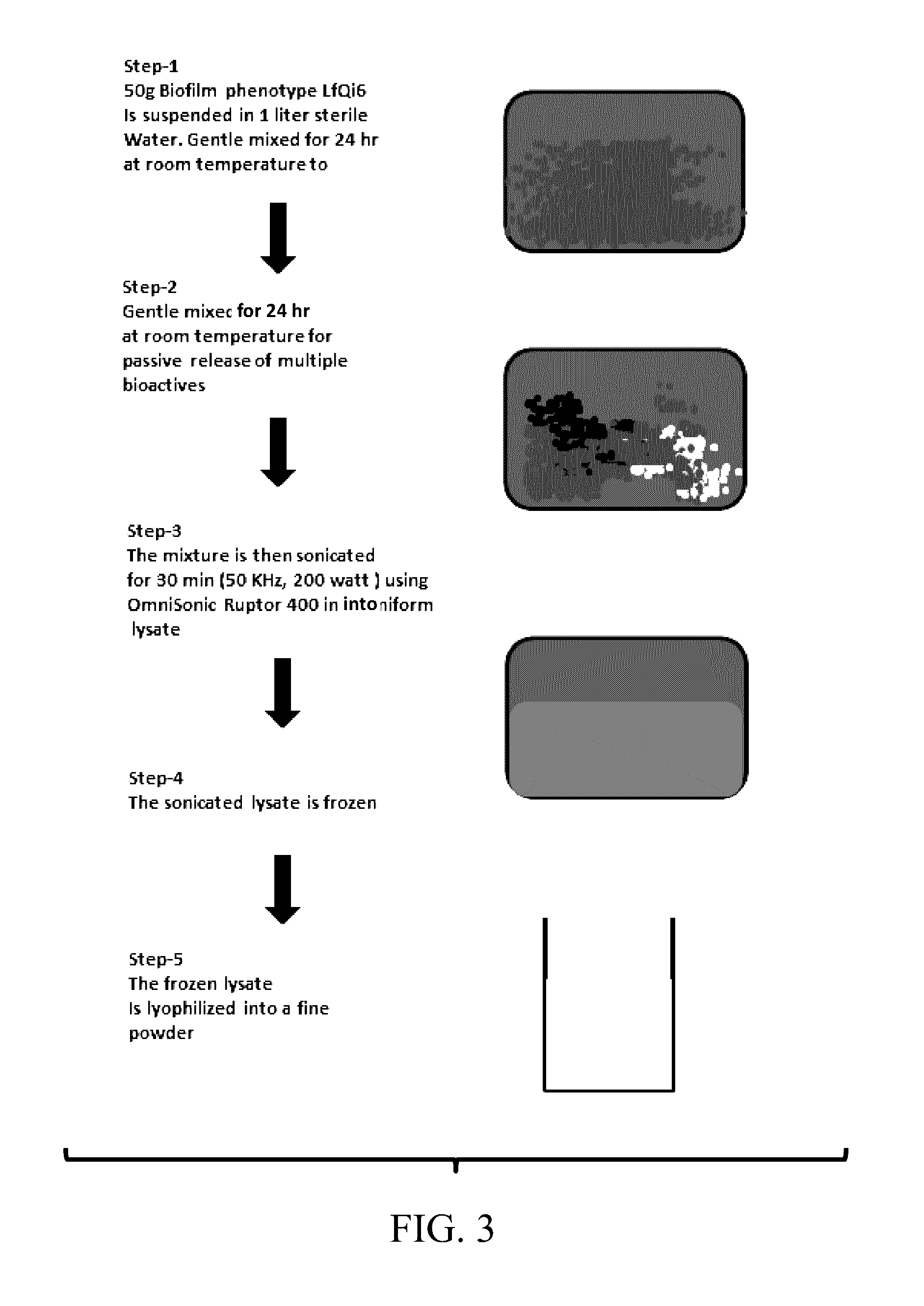Materials and Methods for Improving Immune Responses and Skin and/or Mucosal Barrier Functions
a technology of immune response and skin, applied in the field of materials and methods for improving immune response and skin and/or mucosal barrier functions, can solve the problems of heavy economic burden and significant disruption of the quality of life of individuals affected by ad, and achieve the effects of reducing the incidence of acute flares, improving the appearance and/or the texture of skin, and reducing the severity of symptoms
- Summary
- Abstract
- Description
- Claims
- Application Information
AI Technical Summary
Benefits of technology
Problems solved by technology
Method used
Image
Examples
example 1
Lf Qi6 Biofilm Phenotype Differs from the Planktonic Phenotype
[0139]Product extraction and protein estimation demonstrate different protein levels between the biofilm and planktonic phenotypes, as seen in Table 1 below. SDS data in FIG. 5 further corroborate such differences, as shown by extra bands expressed in the Lf Qi6 biofilm phenotype that are not present in the planktonic phenotype, indicative of unique proteins in the bioextract of the biofilm. Size-exclusion HPLC data in FIGS. 6 and 7 illustrate differences in molecular weight between proteins in bioextract prepared from Lf Qi6 biofilm and planktonic phenotype.
TABLE 1Product extraction and protein estimation from biofilmand planktonic shows different protein levels.ExtractProteinProteinSampleYieldYield% InNo.Description(g / L)(g / L)ExtractPellet1Planktonic0.40.252.22Biofilm-unextracted0.70.461.33Biofilm-extracted0.60.237.3Cell Lysate1Planktonic0.090.0330.83Biofilm-extracted0.100.0434.74Biofilm-unextracted0.20.0631.6Biosurfacta...
example 2
Lf Qi6 Biofilm has Anti-Biofilm Activities Against MRSA In Vitro: Inhibition, Anti-Adhesion, and Detachment
[0142]Various anti-biofilm activities of Lf Qi6 were initially assessed in vitro via 96-well plate assays, including inhibition, anti-adhesion and detachment. The biofilm inhibition assay evaluates the new biofilm forming capacity of MRSA when co-incubated with Lf Qi6. Results demonstrate that Lf Qi6 at 0.5-1.0 mg / mL inhibits 40-50% of MRSA biofilm formation measured at 24-hour co-incubation (FIG. 19A). The anti-adhesion assay evaluates the ability of Lf Qi6 to prevent MRSA from binding to a surface. Overnight pretreatment with 0.5-1.0 mg / ml Lf Qi6 followed by a 5-hour MRSA biofilm exposure blocked 80-85% MRSA biofilm adhesion in a 24-hour culture assay (FIG. 19B). The biofilm detachment assay demonstrates the ability of Lf Qi6 to remove a preformed biofilm; at 5 minutes of treatment, 0.5-1.0 mg / mL of Lf Qi6 detached 30% of MRSA biofilm (FIG. 19C), with similar results obtained...
example 3
Lf Qi6 Rapidly Detaches MRSA Biofilm in an Ex Vivo Human Skin Organotypic Culture System
[0143]An ex vivo organotypic human skin culture system was optimized for the purpose of biofilm inoculation onto living human skin explants obtained from surgical specimens. MRSA biofilm cultures were inoculated onto the ex vivo surface and allowed to grow for 48 hours. Biofilm was visualized via stain, with robust biofilms forming on the skin in 24 to 48 hours (FIG. 19E). Comparing pre- with post-treatment, a significant reduction in MRSA biofilm burden was noted at 10 minutes of treatment with 0.5-1.0 mg / mL of Lf Qi6 (FIG. 13).
PUM
 Login to View More
Login to View More Abstract
Description
Claims
Application Information
 Login to View More
Login to View More - R&D
- Intellectual Property
- Life Sciences
- Materials
- Tech Scout
- Unparalleled Data Quality
- Higher Quality Content
- 60% Fewer Hallucinations
Browse by: Latest US Patents, China's latest patents, Technical Efficacy Thesaurus, Application Domain, Technology Topic, Popular Technical Reports.
© 2025 PatSnap. All rights reserved.Legal|Privacy policy|Modern Slavery Act Transparency Statement|Sitemap|About US| Contact US: help@patsnap.com



